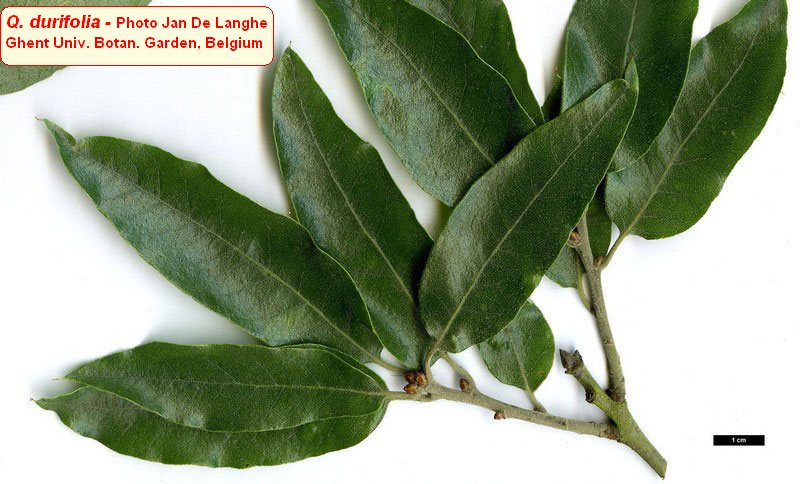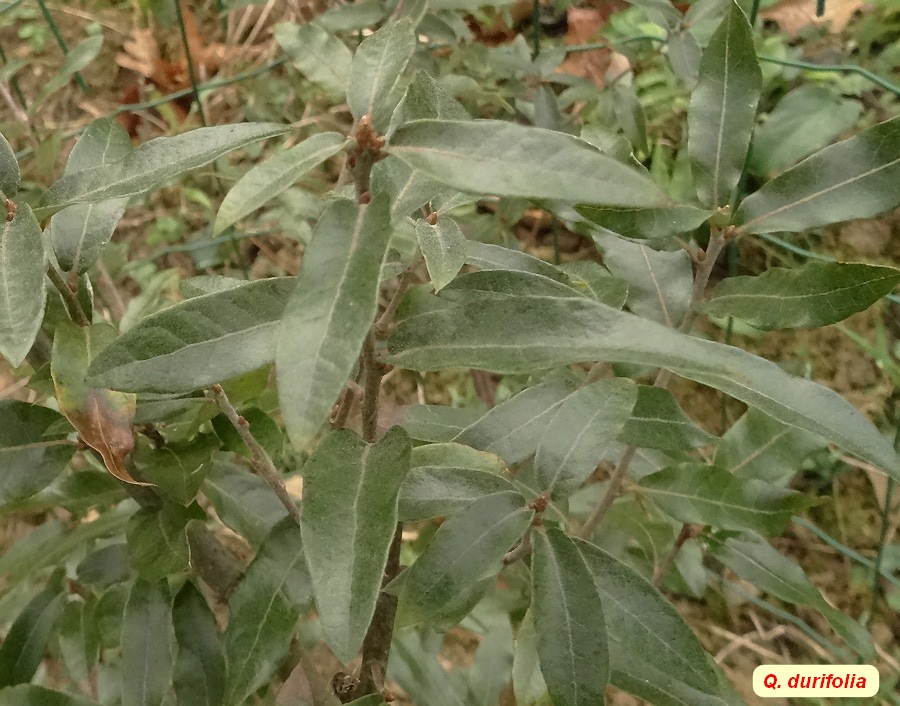| Quercus durifolia | |
| Author | Seemen ex Loes. 1900 Bot. Jahrb. Syst. 29: 95 |
| Synonyms | |
| Local names | sipuri; |
| Range | Mexico
(Chihuahua, Durango, Nuevo Leon, Sinaloa, Sonora, Tamaulipas); 1700-2350
m; |
| Growth habit | 2-9 m tall; often taller in cultivation; |
| Leaves | 3-6
cm long, 1-1.5 wide; evergreen or lately deciduous ; subcoriaceous; lanceolate
or oblong-lanceolate; apex obtuse or acute, bristle-tipped; base obtuse
or slightly cordate ; margin flat, not revolute, often undulate, mostly
entire but with seldom 1-2 aristed teeth near apex; dark grey-green above,
hairless except some multiradiate hairs scattered along midrib; greyish
green beneath, with an even, dense, short, more or less persistent tomentum,
made of fasciculate, undulate, stalkless or shortly stipitate, long trichomes,
without glandular hairs; midrib yellow, almost glabrous; |
| Flowers | in May ; male catkins 3 cm long, with pubescent rachis; male flowers with 6 stamens, and glabrous anthers; female flowers stalkless or nearly so; |
| Fruits | acorn
ovoid or ellipsoid, 1-1.3 cm long, singly or paired, sessile or on a very
short stalk; cup conical to halfround, with light grey hairs, enclosing
1/2 of nut; maturing in 1 year from August to October; |
|
Bark, twigs and |
bark
blackish, smooth at first, then rough, fissured; twig slender, 2-4 mm
thick, glabrescent (young twigs tomentose); bud ovate or globose, light
brown, 2 mm long; unconspicuous lenticels; |
| Hardiness zone, habitat | hardiness zone : 7; |
| Miscellaneous | --
A. Camus : n° 296; -- Sub-genus Quercus, section Lobatae, Series Erythromexicanae; -- -- Possible confusion with Q. saltillensis, but this one is glabrescent abaxially, with stellate trichomes only along veins. |
| Subspecies and varieties |
|
| Pictures |
More pictures HERE
|







